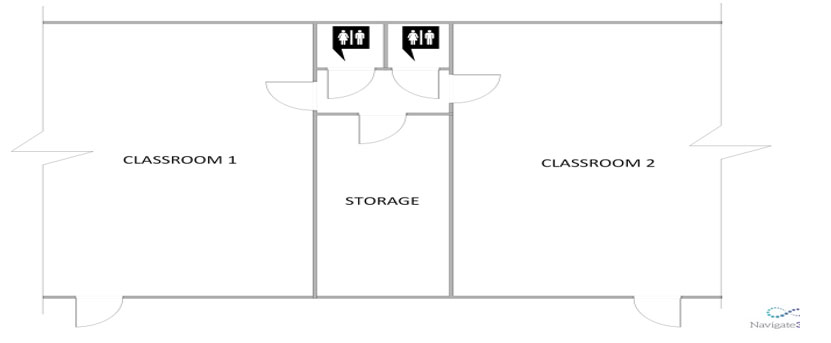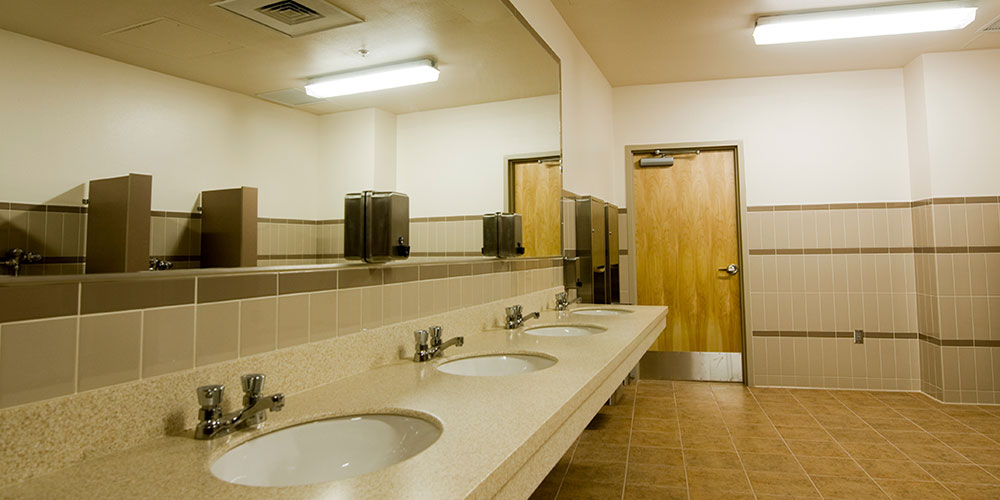Note: The views expressed by guest bloggers and contributors are those of the authors and do not necessarily represent the views of, and should not be attributed to, Campus Safety.
When interviewing SROs, principals, teachers, and staff regarding campus safety assessments, their biggest worry is an active shooter. However, it turns out their biggest problem is their restrooms.
Problems in restrooms include bullying, vaping, cultural/religious/racial intimidation, fighting, criminal damage, political fights, educational disruption, drug use, overuse of staff resources, wandering students, and lost education hours and opportunities.
Restrooms are taxing educational resources more than ever before and making our classrooms less safe. Almost all security experts agree that classroom doors should be closed and locked during instructional periods for safety purposes. Interviews with teachers about why they don’t want their doors to be closed and locked are not about safety concerns — they are almost 100% about students’ bathroom trips.
Several years ago, I first noticed the issues of unaccompanied students wandering the halls, sitting in stairwells, and texting on their phones. Most were carrying a pass for the restroom. Dozens of students were in no hurry to get back to class and some of them were spending the entire period in the hallways or restroom. During daytime vulnerability assessments we were conducting as part of a risk assessment, students who were unaccompanied in the hallways during class let us into buildings more than once.
Bathroom trips are compromising the security of the building. Students were constantly coming in and out of classrooms, preventing the door from being secured during instructional periods. Many teachers were just leaving their doors open. Some students were propping exterior doors to go to their cars. The vice principals and SROs were doing their best, but students going to the bathroom was exponentially increasing the risk to the schools.
Just this week during a security audit, I got the attention of a young unescorted elementary school student returning from the bathroom alone and got her to open a side door for me. I wandered through the school for five minutes before I was stopped by staff. I could have kidnapped a child or created a major disruption. This is the second time in two weeks this has happened — in different schools hundreds of miles away from each other.
Schools that install vape detection systems are constantly playing cat-and-mouse games with students in restrooms all day. Political arguments centered around bathroom use have roiled several districts. Fights, bullying, and intimidation are largely centered around restrooms, usually when teachers are in the classroom and students are not under direct supervision.
Many schools reported that the boys’ restrooms have been severely damaged in the last two years, especially at the high school level. This has resulted in thousands of dollars being spent to replace and repair sinks, toilets, and walls, and the removal of mirrors and doors. Some staff reported this issue has been going on for years. Even my 16-year-old daughter tells me that some girls at her high school go to the restroom and spend an entire class there if they don’t like the class or teacher.
Preventing Unwanted Student Behavior Through School Design
While there may be a need in some parts of a school to have a public restroom area (gymnasiums and auditoriums come to mind), we can design our way out of all these problems and make our schools safer in the future.
In 2020, the General Accounting Office estimated that 53% of all school buildings in the U.S. needed significant upgrades, renovations, or total replacements as they reached the end of their lifespans. There is a historic opportunity to begin changing architecture to help mitigate violence, alleviate security concerns, and relieve educational staff of some disciplinary burdens.
The solution is to move restrooms into the classroom. Each classroom would have its own single-person restroom attached to the actual classroom, like in the graphic below.

Photo Source: Navigate360
Students would no longer have to leave the classroom during class, allowing the room doors to be locked during instructional periods. Vape detectors can be placed in the restrooms, which would no longer become gathering places for students, fights, destruction, or intimidation. Because restrooms are designed for single-person use, political arguments over gender use become irrelevant. This design would also create additional spaces for teacher storage between the classrooms.
It ends the security vs. convenience argument about locking and closing classroom doors. The expense of magnets and door props used by teachers becomes unnecessary as the reason for their existence — bathroom trips — is phased out.
We have an opportunity to improve our security posture in schools in a comprehensive and needed way. We just need to be tactically proactive in design to meet the school and teacher needs and the security portion becomes part of the larger education solution.
Joseph Hendry is the senior director of on-site services at Navigate360. He was named by the Ohio Department of Homeland Security and Ohio Attorney General’s Office as an expert in civilian and law enforcement response to active threats. He serves on the ASIS School Safety and Security Steering Committee. He served six years in the United States Marine Corps and 27 years with the Kent State Police Department. He is a Best Recommended Expert Service Provider for the Insurance Industry and holds a bachelor’s degree in Telecommunications.
Hendry currently is a Principal appointed to the Cross Functional Emergency Preparedness and Response (ACT-AAA) Committee for NFPA 3000 to write the national standard for civilian, law enforcement, fire service and emergency medical service. He was issued the classification of Special Expert by NFPA.













